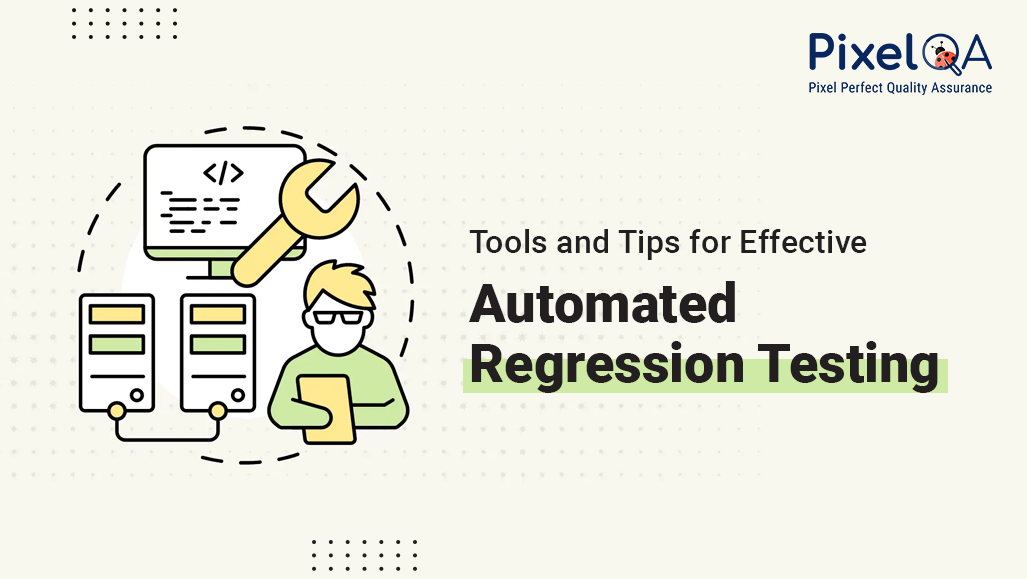
Table of Contents
Introduction
Have you ever pushed a "simple" fix on a Friday only to have three other features break? That's the constant risk of regression. And whenever applications evolve, even minor code changes can lead to unforeseen issues. Now, finding each one of them manually doesn't make any sense. Manual checking is laborious, repetitive, and more dangerously prone to human error. This is where automation changes the game. An essential safeguard to ensure that updates don't affect features that already exist? Automated regression testing. It's what speeds up release cycles, improves quality, and gives teams confidence in every deployment.
To make regression automation work well you need the right tools the right approach and a clear strategy so choosing the right regression testing services can make a big difference in your testing success.
Let us explore the most trusted automated regression testing tools along with important tips to improve your results.
Why Automated Regression Testing Matters
Every modern software product undergoes continuous development. This includes adding new features, fixing bugs, and optimising performance. Even in areas unrelated to the update? There is always a chance that any of these changes will inadvertently destroy the functionality. Especially for large, complex applications, manual regression testing is not scalable.
In addition to reducing testing cycles? Automation ensures consistency and repeatability. Because, once defined, your regression suite works tirelessly across environments, phases, and builds. This, in fact, directly enhances the quality of software. Brings down the number of production bugs and heightens confidence during releases. For businesses following the continuous integration and continuous delivery philosophy? Performing automated regression tests becomes a must.
Top Tools for Automated Regression Testing
Fit is more important than features when selecting a tool. The ideal regression testing tool is one that supports your tech stack. Integrates easily into your workflow and grows with your application.
One of the most popular frameworks for performing automated tests is Selenium, especially for web applications. It is open-source, versatile, and supports a number of languages, including C#, Python, and Java. Selenium is a favorite for many developers due to its good integration with the CI/CD pipeline.
Katalon Studio is a strong competitor for any team in need of a more user-friendly low-code alternative. Combining the power of Selenium with an intuitive interface enables faster test creation. And easier management by QA engineers with limited amounts of programming. With integrated reporting, data-driven testing, and integrations with Jira and Git? It's a fantastic all-in-one solution.
Recently, Cypress has become more popular for use with front-end frameworks. Like Angular or React in contemporary web applications. It is ideal for teams that prioritise creating developer-friendly test environments. Because of its quick execution, real-time reloading, and robust debugging capabilities.
TestComplete provides a wide range of features. For enterprise-scale testing, including cross-platform compatibility, object recognition, record-and-playback, and API testing support. The range of features in this high-end tool makes it worth the money for larger teams.
Lastly, because JUnit, TestNG, and PyTest work well with CI tools. Like Jenkins, GitHub Actions, and GitLab CI? They are recommended for teams that have a significant investment in DevOps pipelines. They are perfect for code-driven test suites because they are lightweight.
The choice of which tool will be used depends upon your team's experience. Product architecture and the extent to which you want automation to be performed. What matters is choosing the tool that fits your long-term quality goals.
Tips to Make Automated Regression Testing More Effective
Of course, automated regression testing is powerful only if it's done thoughtfully. Probably the most common mistake teams make is automating everything too quickly. The aim is impact. A focus on high-risk areas ensures that your testing effort yields the maximum possible value.
A regression suite should be stable, maintainable, and meaningful. Tests that frequently break or produce false positives drain resources and slow down development. Start off by defining a set of critical workflows and user journeys which cannot fail under any circumstance. This would include dashboards, payments, login processes, and anything essential to the user experience. And that they view or interact with.
Making the tests modular and reusable is another crucial piece of advice. Divide lengthy, inflexible scripts into manageable chunks to facilitate rapid updates. When coding? Adhere to best practices for maintainable automation. Use environment variables, and keep test data separate.
Efficiency is significantly increased by integrating your regression tests into the CI/CD pipeline. Every pull request, nightly build, and major release should trigger automated testing. Problems are thus identified long before they affect production.
Another important thing is to monitor and analyze test reports. Tools like Allure, Extent Reports, or built-in dashboards in platforms like Katalon maintain a record of failures. Execution times and which tests are flaky. Flaky tests with fixes improve reliability and, therefore, strengthen the whole automation suite.
Lastly, remember to work as a team. Automated regression testing is not solely the responsibility of a QA team. Testers, developers, and product owners should all agree on what should be covered, how to write the tests, and how to interpret the test results. Shared understanding keeps your suite relevant and valuable as your application evolves.
The Conclusion
Effective automated regression testing requires the right tooling combined with a smart strategy to ensure software will remain reliable in a constant state of change. With the choice of the proper automation framework, teams can build a stable, scalable, and productive testing ecosystem that ranks important test cases, writes maintainable scripts, and fits all these into pipelines of CI/CD.
Automated regression testing is the foundation that keeps contemporary applications operating smoothly. In a world where speed is not the enemy of quality but rather its ally. Besides, using the appropriate tools and following tried-and-true best practices creates the conditions for predictable and repeatable releases.

